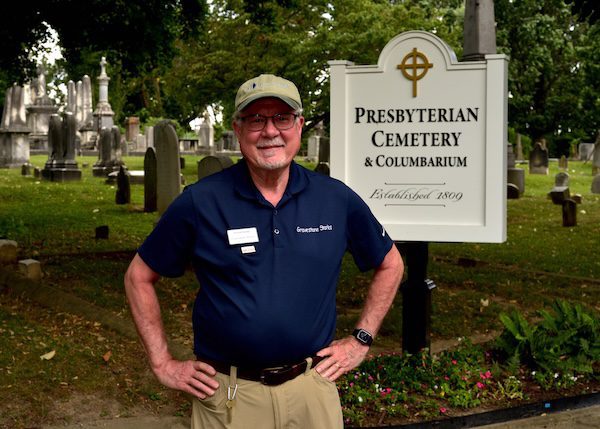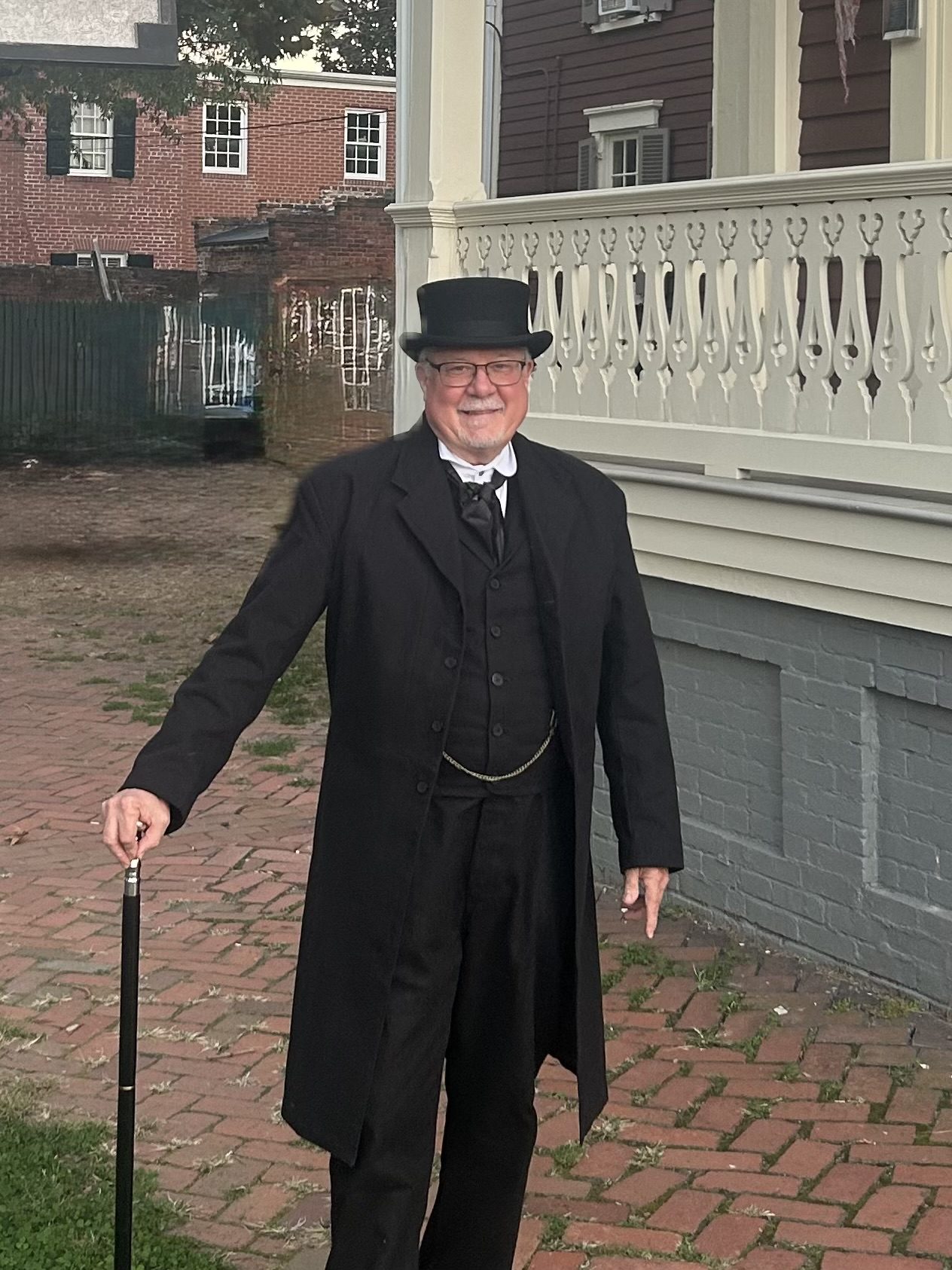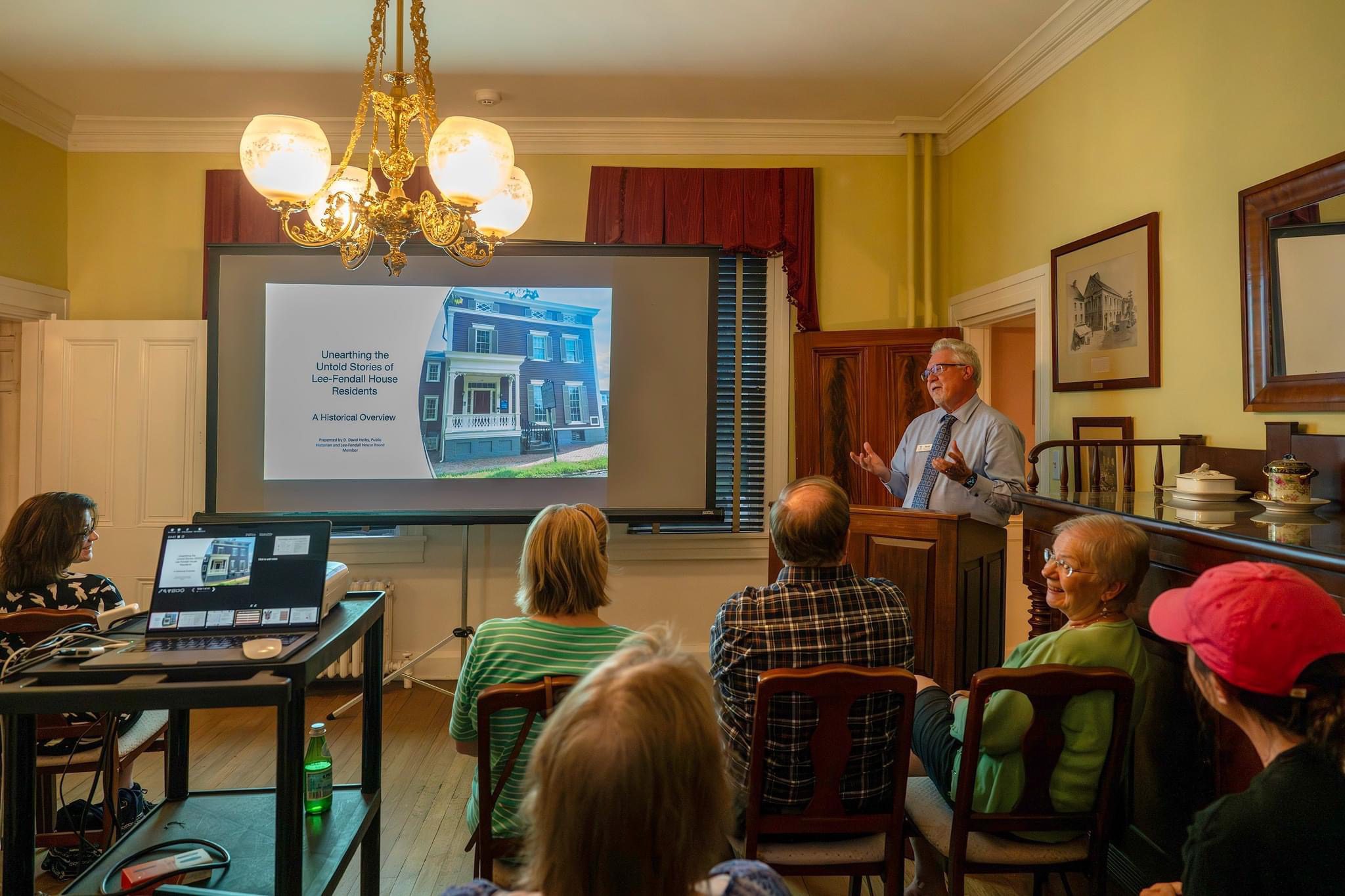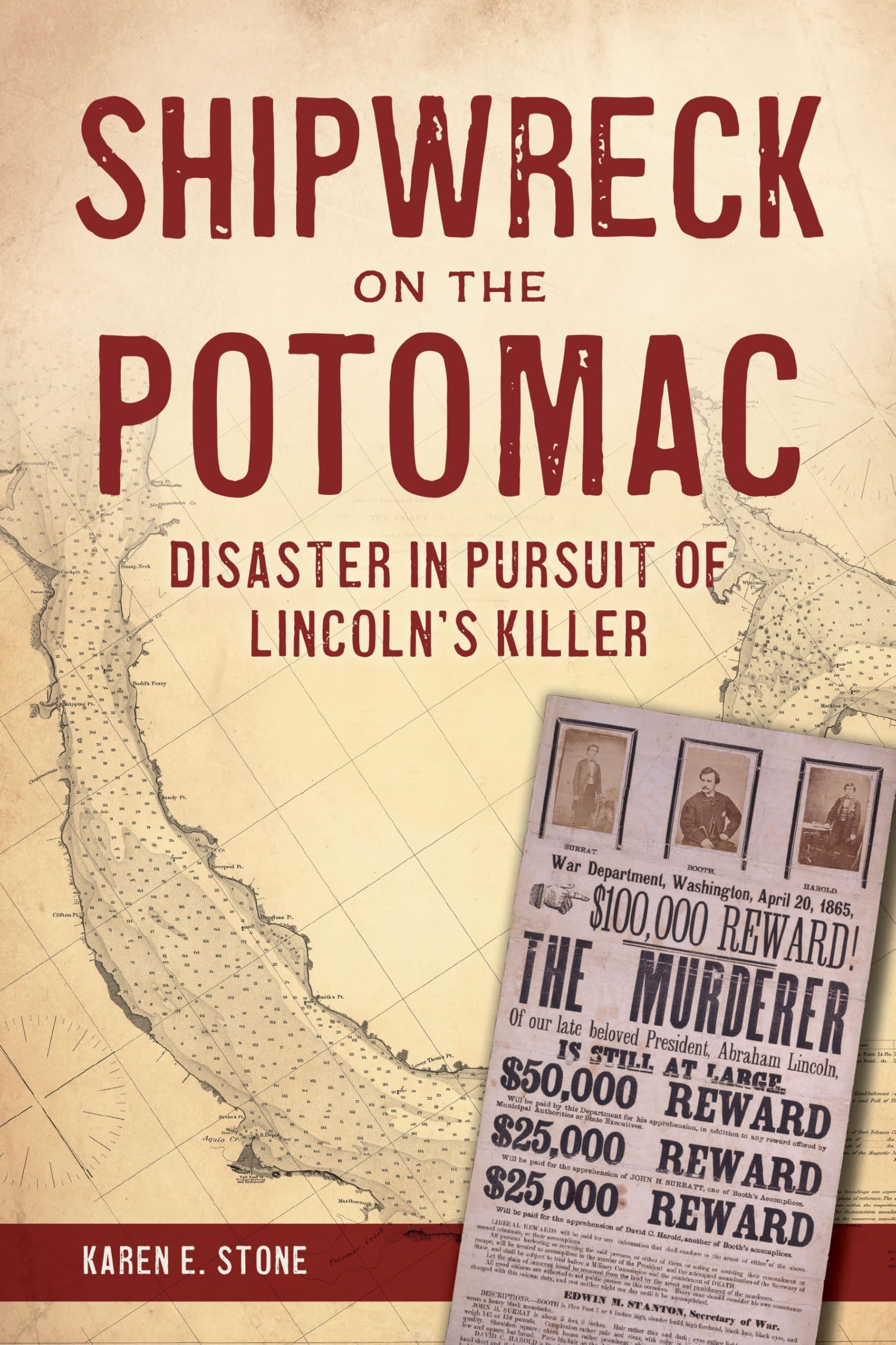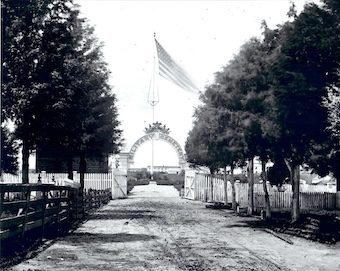The Legacy of the Alexandria Quaker Burial Ground
The Alexandria Quaker Burial Ground, located in Alexandria, Virginia, is a testament to the enduring legacy of the Religious Society of Friends, better known as Quakers. Established in 17th-century England by George Fox, the Quakers faced persecution for their distinctive beliefs, particularly the conviction that the divine presence dwells within each person. They rejected elaborate rituals, did not have ordained clergy, and promoted spiritual equality among genders. The Quakers’ arrival in mid-17th century America marked the beginning of a significant religious and social influence, and the Alexandria Quaker Burial Ground stands as a reminder of their impact on the region.
Quakers and Social Reform
Quakers are noted for their pacifism and were instrumental in the abolitionist movement and the advancement of women’s rights. This backdrop highlights the importance of Quaker Meeting Houses, including the one constructed in 1811 at 600 Wolfe Street. Even as the Quaker community in Alexandria underwent changes, such as the Alexandria Meeting’s dissolution, their commitment to social justice persisted.
Transformations Through Time: The Evolution of the Alexandria Quaker Burial Ground
The history of the Alexandria Quaker Burial Ground is marked by several transformations. In 1784, Alexandria’s Quaker community established the burial ground on Queen Street, near Washington Street, as a replacement for their earlier cemetery and meeting place on South St. Asaph Street. By 1809, a health ordinance halted new burials at the Queen Street site, leading to the use of the Friends Cemetery in Washington, D.C., although the Queen Street burial ground continued to be used discreetly by the Quakers for some time afterward.
Tragically, a fatal accident occurred at the site in 1884 when a collapsing cemetery gate killed a young girl. In 1918, the Audubon Society repurposed the cemetery as a bird sanctuary, and later, the site was converted into a playground. Finally, in 1937, a lease agreement led to establishing the Kate Waller Barrett Branch Library, which currently occupies the historical Quaker burial site at 717 Queen Street.
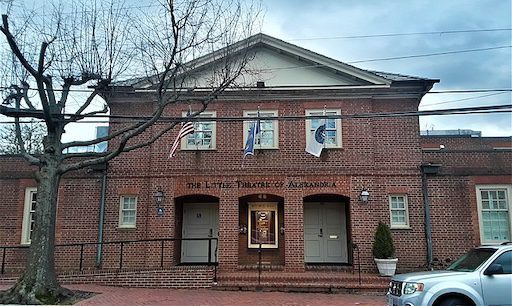
Out of 159 individuals once buried at the Alexandria site, 66 were reinterred on the property during the library’s establishment, while 93 rest in their initial plots. Records of only 78 burials remain.
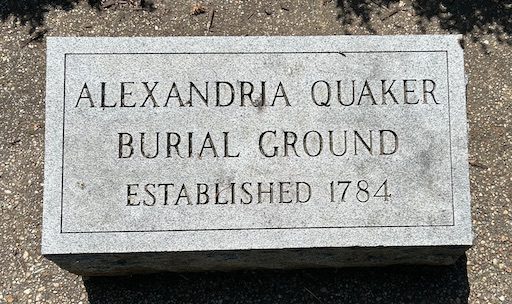
Prominent Burials at the Alexandria Quaker Burial Ground
The Alexandria Quaker Burial Ground is the final resting place of several notable Quakers who made significant contributions to the community and left lasting legacies. Among these prominent figures are Dr. Elisha Cullen Dick, William Hartshorne, and William Stabler, each of whom played a unique role in shaping the history of Alexandria and the United States.
Dr. Elisha Cullen Dick (1762-1825) Physician and Prominent Quaker
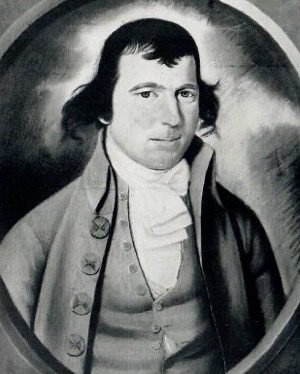
The Alexandria Quaker Burial Ground is noted for the prominent Quaker figures interred within its grounds. Among them is Dr. Elisha Cullen Dick, a physician who studied under Dr. Benjamin Rush. Dr. Dick’s remains were laid to rest in an unmarked grave at the Alexandria Quaker Burial Ground following his death in 1825.
You can read more about him at this blog: [https://gravestonestories.com/discover-the-history-of-the-quaker-burial-ground-in-alexandria-va-from-sacred-space-to-modern-landmark/]
William Hartshorne (June 1742 – December 16, 1816) Quaker Merchant and Civic Leader
Another notable figure buried at the Alexandria Quaker Burial Ground is William Hartshorne, a Quaker merchant and civic leader in early America. Hartshorne’s life was marked by a commitment to community and enterprise, as evidenced by his roles as a trustee of Alexandria Academy and a signatory of the petition to establish Overseers of the Poor.
As a merchant dealing in goods such as wine, Hartshorne prospered, allowing him to play a significant role in the development of Alexandria, Virginia. His marriage to Susanna Saunders in 1767, held at Philadelphia Monthly Meeting, brought forth eight children who survived infancy, and later his marriage to Susanna Wood Shreve in 1803 at the same Quaker Meeting House, showcased his deep roots in the Quaker community.
Hartshorne’s entrepreneurial spirit was not confined to his merchant activities. He served as a trustee for various companies and held a significant role as treasurer for the Potomac Company, alongside influential figures like George Washington. His will, an extensive document, reflects his meticulous nature and his desire to ensure his family’s well-being, instructing that his debts be paid and his estate be equitably divided among his wife and children.
His personal encounters with significant historical events are chronicled in his journal, which details his journey to treaty negotiations with Native Americans at Sandusky, Ohio, offering a unique glimpse into the complexities of that era.
Despite his robust business acumen, Hartshorne faced adversity with the passing of the Embargo Act of 1807, which devastated his business, leading to a rigorous inquiry by his Quaker community. Though absolved, the financial impact forced him to sell his cherished farm, Strawberry Hill, along with other properties.
William Hartshorne’s death on October 13, 1816, was a solemn close to a life that had significantly impacted his community, evidenced by his burial in the Quaker Burial Ground in Alexandria. His story is one of resilience, community service, and a steadfast adherence to his Quaker faith, leaving an indelible mark on American history.
William Stabler: The Legacy of a Quaker Apothecary
The Alexandria Quaker Burial Ground is also the final resting place of William Stabler, a significant figure in the history of American pharmacy. Stabler, along with his father Edward and brother-in-law John Leadbeater, operated a renowned apothecary in Alexandria, which served as a cornerstone of the community until its closure in 1933.
Edward Stabler, a devout Quaker and astute businessman, began his apothecary business in 1792 by renting space near the corner of S. Fairfax and Prince Streets in Alexandria. In 1805, he bought land at 107 S. Fairfax Street, where he constructed a three-story brick building for his flourishing apothecary, which became a landmark in the community. By 1829, Edward expanded his enterprise by acquiring the adjacent property at 105 S. Fairfax and integrating it into his business operations.
The Stabler apothecary was renowned for a wide array of products. They sold medicines, farm and garden tools, surgical and dental equipment, personal care items like soap and perfume, as well as various household goods such as Congress mineral water, window glass, paint, varnish, artist supplies, combs, and brushes.
William Stabler, following in his father’s footsteps, played a crucial role in the business from a young age. Edward, often away attending Quaker meetings, entrusted the apothecary to his apprentices and William, his eldest son. After Edward’s death in 1831, William inherited the business, maintaining its family-run ethos by involving his brothers and brother-in-law, John Leadbeater, in the operation.
William Stabler’s tenure as the head of the family business was marked by continued success and community respect. However, he did not have children, and upon his death in 1852, his widow sold the business to John Leadbeater. Leadbeater, a trained apothecary and dentist, renamed the business to John Leadbeater, marking the end of the Stabler name in the enterprise.
After William’s passing, the apothecary shop’s story continued to be a significant chapter in American history. The shop, a cornerstone of the community, remained operational until 1933. Its closure was a result of the financial hardships of the Great Depression and the passing of its last owner, Edward Stabler Leadbeater, Jr., signifying the end of an era in traditional apothecary practices.
The historical significance of the Stabler-Leadbeater Apothecary Shop was recognized, leading to its preservation as a museum by the American Pharmaceutical Association. Today, this museum in Old Town Alexandria serves as a testament to the past. Visitors are treated to a collection of over 20,000 artifacts, including hand-blown glass bottles and herbal botanicals, each telling a part of the story of this unique family-run business. The extensive Archival Collection includes letters, invoices, account books, and ledgers from 1792 to 1933, featuring names of notable customers like Martha Washington and Nelly Custis, thus offering a glimpse into the social and health-related aspects of the period.
The Stabler-Leadbeater Apothecary Museum stands as a lasting tribute to the enduring legacy of William Stabler and his family, showcasing their impact on the field of pharmacy and early American society. William Stabler is interred in Alexandria’s Quaker Cemetery, though his gravestone is located at the Woodlawn Friends Meeting House Cemetery in Fort Belvoir, Fairfax County, Virginia, symbolizing his lasting connection to the history of pharmacy and Quakerism in early 19th-century America.
Preserving the History and Heritage of the Alexandria Quaker Burial Ground
The Alexandria Quaker Burial Ground stands as a testament to the enduring legacy of the Quakers in Alexandria and their significant contributions to the region’s social, economic, and spiritual landscape. Through the lives of notable figures such as Dr. Elisha Cullen Dick, William Hartshorne, and William Stabler, we gain a deeper understanding of the values and principles that guided the Quaker community during the early years of the United States.
Despite the transformations the burial ground has undergone over the centuries, from its establishment in 1784 to its current role as a library and historical landmark, the site continues to serve as a vital link to the past. The stories of the individuals interred there offer valuable insights into the challenges and triumphs of the Quaker community and the broader society in which they lived.
Preserving the history and heritage of the Alexandria Quaker Burial Ground is essential for future generations to appreciate the profound impact of the Quakers on the development of Alexandria and the United States as a whole. By maintaining this sacred space and sharing the stories of those laid to rest within its grounds, we ensure that their legacies continue to inspire and inform us, reminding us of the importance of commitment to faith, community, and social justice.
As we reflect on the lives and contributions of the notable Quakers buried at the Alexandria Quaker Burial Ground, let us also reaffirm our dedication to preserving this invaluable piece of history. Through ongoing research, conservation efforts, and public education, we can keep the spirit of the Quaker heritage alive and ensure that this remarkable site continues to serve as a source of inspiration and learning for generations to come.
Sources of Information
Pippenger, W. E. (1992). Tombstone Inscriptions of Alexandria, VA (Volume 3). Family Line Publications: Westminster, Maryland.
Barber, J. G. (1998). Alexandria in the Civil War. H.E. Howard, Inc.
Ring, C. K., & Pippenger, W. E. (2008). Alexandria, Virginia Town Lots 1749 – 1801 together with Proceeding of the Board of Trustees 1749 – 1801. Heritage Books.
Crothers, A. G. (2012). Quakers Living in the Lion’s Mouth. The Society of Friends in Northern Virginia, 1730 – 1865. The University of Florida Press.
Catlin, M. C. (2016, October). Historical overview of the Woodlawn Quaker meeting.
Dahmann, D. C. (2002). The Roster of Historic Congregational Members of the Old Presbyterian Meeting House. [Unpublished manuscript].
Dutton + Associates, LLC. (2013, December). Documentary study and archaeological monitoring of the Cromley Row project area, City of Alexandria, Virginia. 812 Moorefield Park Drive, Suite 126, Richmond, Virginia 23236.
City of Alexandria, VA. (n.d.). Historic Cemeteries of Alexandria. Retrieved from https://www.alexandriava.gov/historic-sites/historic-cemeteries-of-alexandria
City of Alexandria, VA. (n.d.). History of the Apothecary Museum. Retrieved from https://www.alexandriava.gov/museums/history-of-the-apothecary-museum
Woodlawn Friends Meeting. (n.d.). Home. Retrieved from https://woodlawnfriends.org/home/
